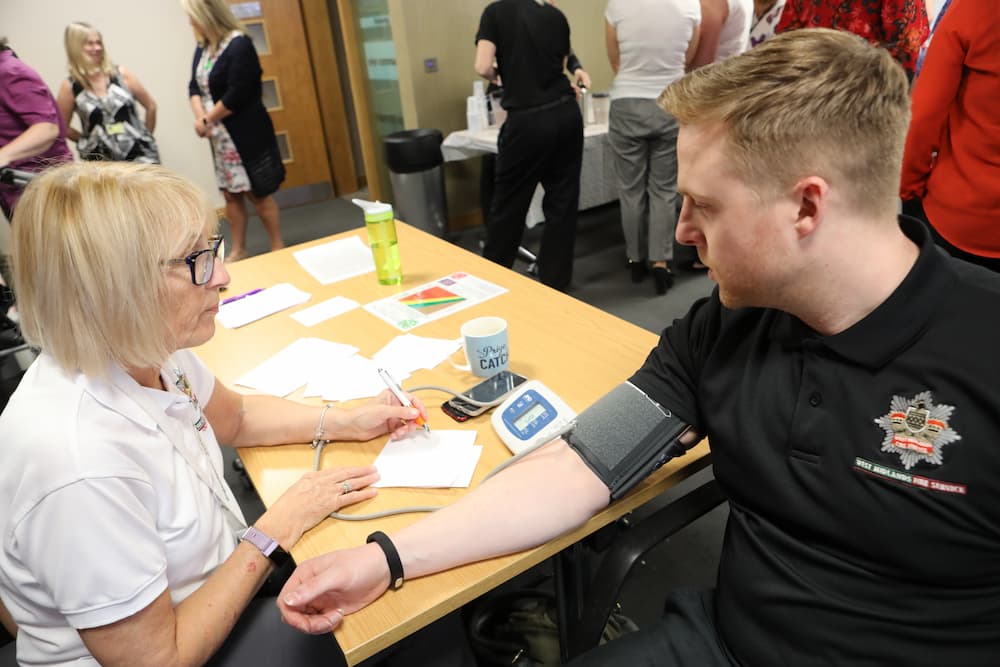Firefighter Selection Process
Find out more about the selection process, tests and practical selection assessments involved in becoming a firefighter.
What selection process and tests can you expect?
There are various stages to our selection process. We outline all the stages and what you can expect along with guidance and resources to help where we can. You can skip to a specific section using the buttons below.
Stage 1 - Online ApplicationStage 2 – Behavioural InterviewStage 3 – Practical AssessmentStage 4 – Pre employment Checks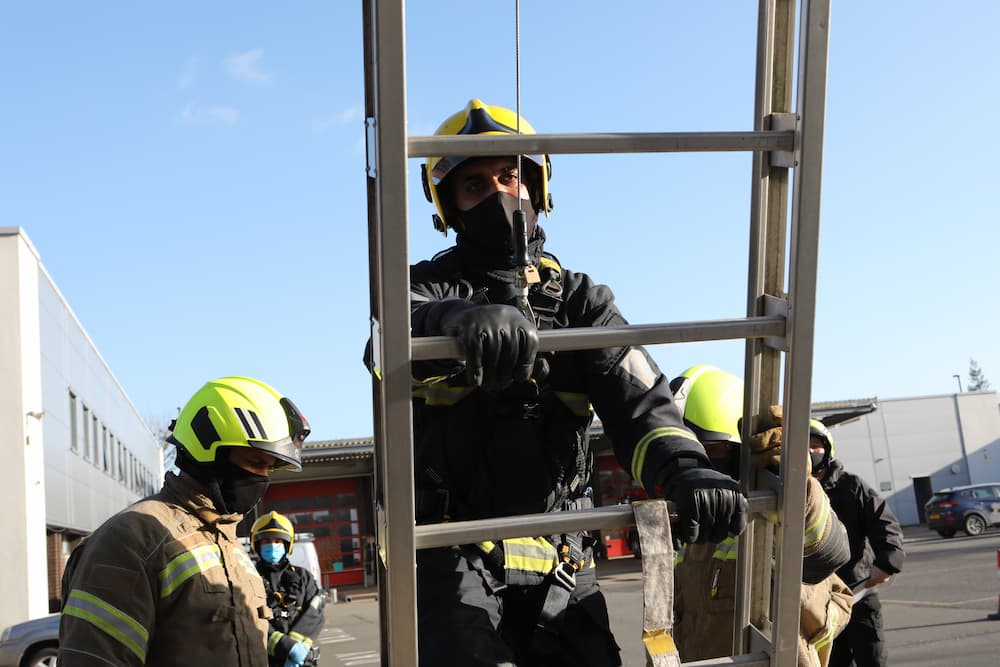

Stage One – Online Application
The online process includes an eligibility questionnaire followed by a range of psychometric assessments which measure your ability to be an effective firefighter. These include:
- behavioural styles questionnaire
- situational judgement test
- verbal reasoning
- numerical reasoning
- mechanical reasoning.
The verbal reasoning, numerical reasoning and mechanical reasoning can be practised using an online test available at the following link: https://www.testpartnership.com/preparation-frs.html
Stage two - Behavioural Interview
This part of the process will explore your understanding of the National Fire Chiefs Council (NFCC) Leadership Framework (linked below). In particular, it will focus on the 'Leading Yourself' criteria contained within the framework.
You will have a formal interview where you will be asked a series of behavioural questions that will require you to draw on your personal experience in those areas. You will also be required to complete a live roleplay exercise around our 'safe and well' principles.
We will also cover your knowledge and understanding of Our Strategy, and how the role of a firefighter fits into the strategy. This part of the process also covers the 'Personal Impact' element of the NFCC Leadership Framework and specifically refers to candidates displaying their understanding, and commitment to diversity and integrity. This will allow us to ensure that you understand the benefits of having a diverse workforce and can demonstrate this through personal experience.
Steps to answer behavioural interview questions
Do your homework
Read the instructions carefully that you have been given by the service prior to your interview, there may be some pre-reading or some pointers to things that may appear in the process, remember if the team have taken the time to put it in the information it isn't there to trip you up, it's to help you do the very best you can when you come to interview.
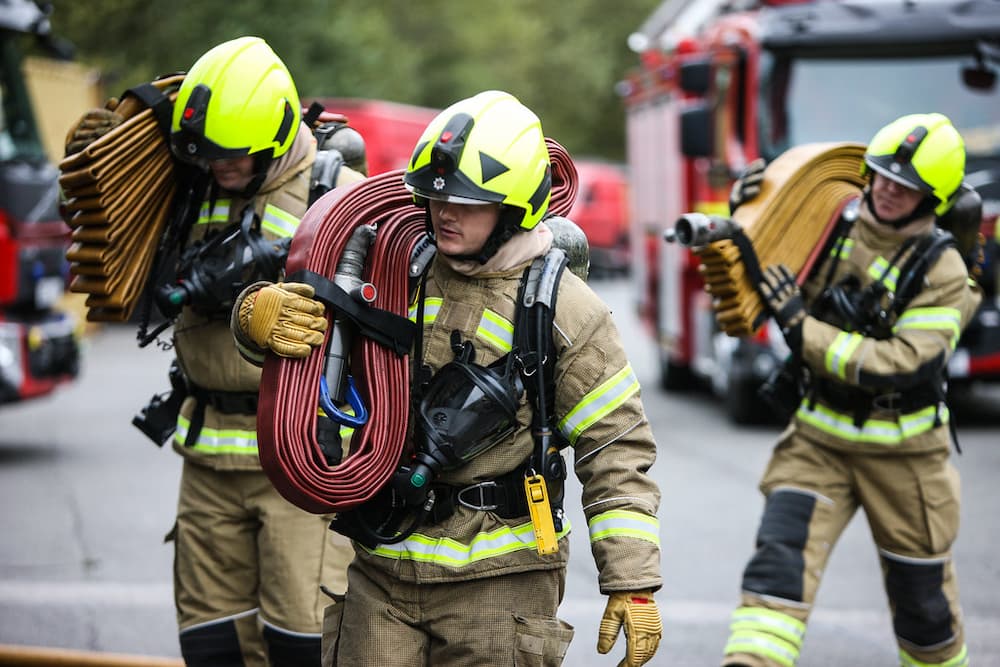
Listen to the question carefully
Commonly, behavioural interview questions tend be long-winded and may sound vague first-time round.
Here is an example: (this is not a firefighter interview question so don’t prepare for it, it is an example to show you how they work)
“Good problem-solving often includes a careful review of the substantial facts and weighing of options before making a decision. Give me an example of when you reached a practical business decision by assessing the facts and weighing the options.”
This is broken down into the initial part which is giving you the context of the question then the actual question.
Make sure you understand the question before you start to answer.
You may ask the interviewer to repeat or rephrase the question if you understand it correctly. In practice, the interviewer should read the question out twice to you anyway but if you are struggling, ask, its better to make sure you are on the right track initially than firing off an answer that isn’t quite what they are after and then have the panel have to redirect you, this will cost you time and the ability to fully explain what you have actually been asked for.
Organise your answer
Allow yourself five seconds or so to collect your thoughts and structure your response. Never feel the need to immediately answer the question, get it straight in your head first, order your thoughts then go, do not worry about silence, Interviewers appreciate this break and could use the time to drink some water, review their notes, or rest their hands from note-taking.
State your answer
Try to limit your answer to about four to five minutes most interviews will have a time allowance, and this is usually around 5 minutes per question. Four or five minutes is long enough to relate a story completely and short enough to hold the interviewer’s attention.
Do not digress from your plan
Resist the temptation to think of new details as you state the answer. By sticking to your planned details and structure This may be the STAR model or another similar, you can provide a consistent, concise, and well-reasoned answer. Find out more about the STAR model here.
Answer follow-up questions
In response to your answer, the interviewer may pose additional questions. These questions may require a brief elaboration, don’t worry about these, it doesn’t mean you have gone wrong they are probing to see how much more depth there may be or they are trying to get you too complete a description of something that may be relevant.
Stage three – Practical Assessment
These are job-related tests, aligned to the National Framework, to ensure you have sufficient practical ability to handle fire service equipment.
You’ll be assessed to ensure that you can work at heights, have good manual dexterity and the ability to combine upper and lower body strength and coordination.
Full instructions are given before and throughout the day and you’ll be provided with fire service protective clothing.
30kg grip test, with correct lifting technique.
Hold in position for 40 seconds, then lower the weight to the ground.
Important qualities for this test: grip strength, core body strength, upper body strength.

55kg
Drag the dummy by the straps around a 30-metre course, walking confidently and backwards guided by an instructor.
Time limit - 40 seconds.
Important qualities for this test: grip strength, cardiovascular fitness, upper body strength.
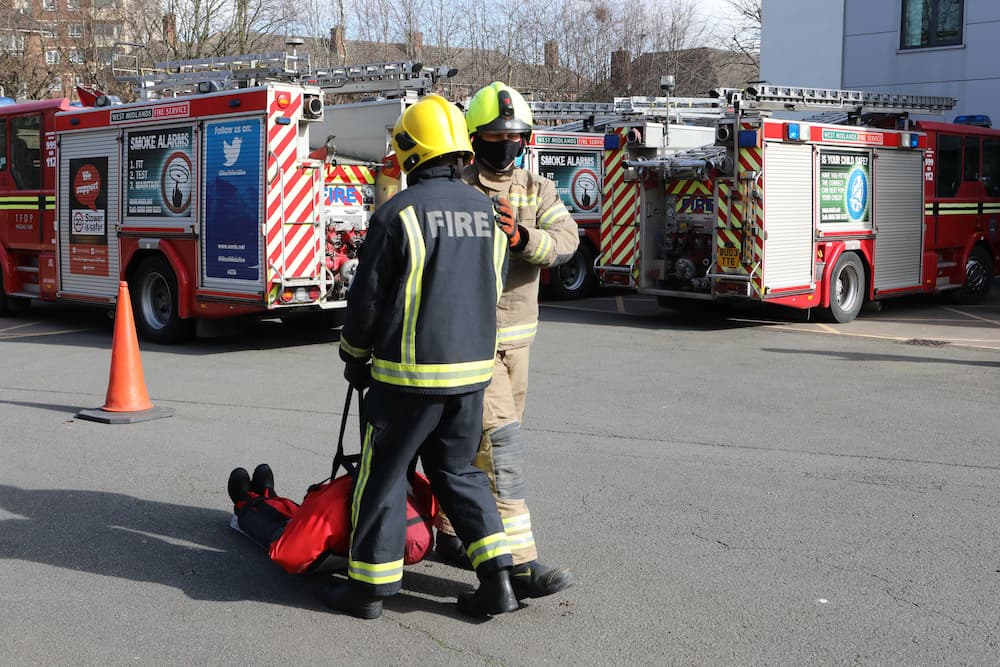
Enter the text content of your accordian.
You will be given a demonstration and a briefing then you will assemble and disassemble the equipment.
It is important to listen to the brief and follow the instructions carefully.
Time Limit: 5 minutes 8 seconds.
Important qualities for this test: ability to follow detailed instruction, manual dexterity, attention to detail, problem solving.
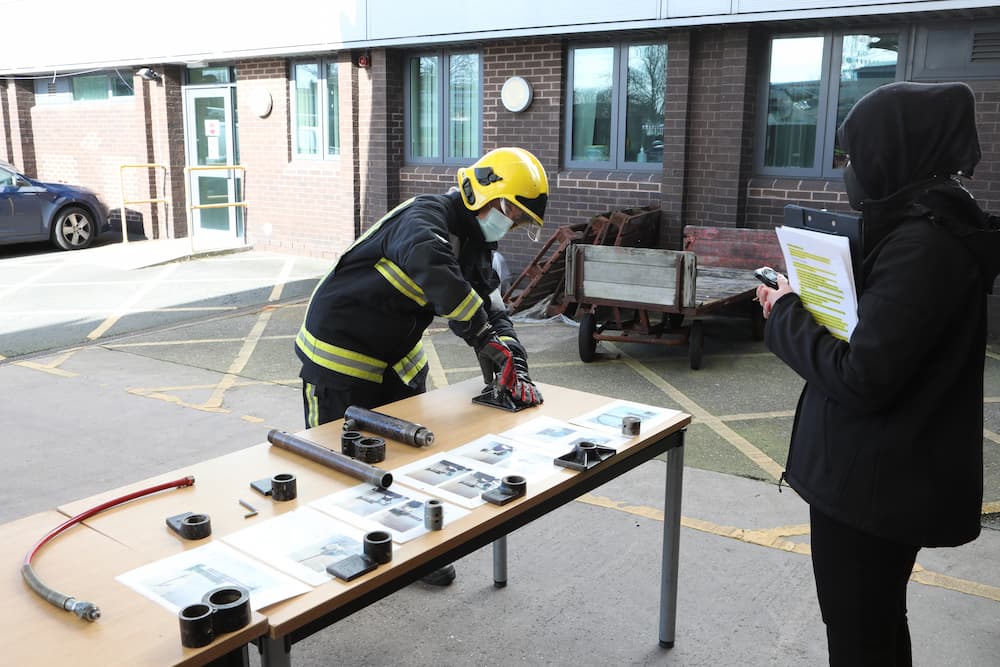
In a breathing apparatus harness with cylinder attached and a breathing apparatus face mask blacked out you will negotiate a confined space cage.
You will be expected to make steady progress through the cage without putting yourself in danger or causing yourself undue distress.
Important qualities for this test; calmness and problem solving in difficult physical situations, flexibility, cardiovascular fitness.

In a working at height harness and after a full brief, demonstration and chance to practice you will confidently ascend the 13.5m ladder with correct technique and perform a ‘leg lock’ with both legs before descending confidently with correct technique.
Important qualities for this test; ability to follow detailed instruction, hip and leg flexibility, grip strength and upper body strength.
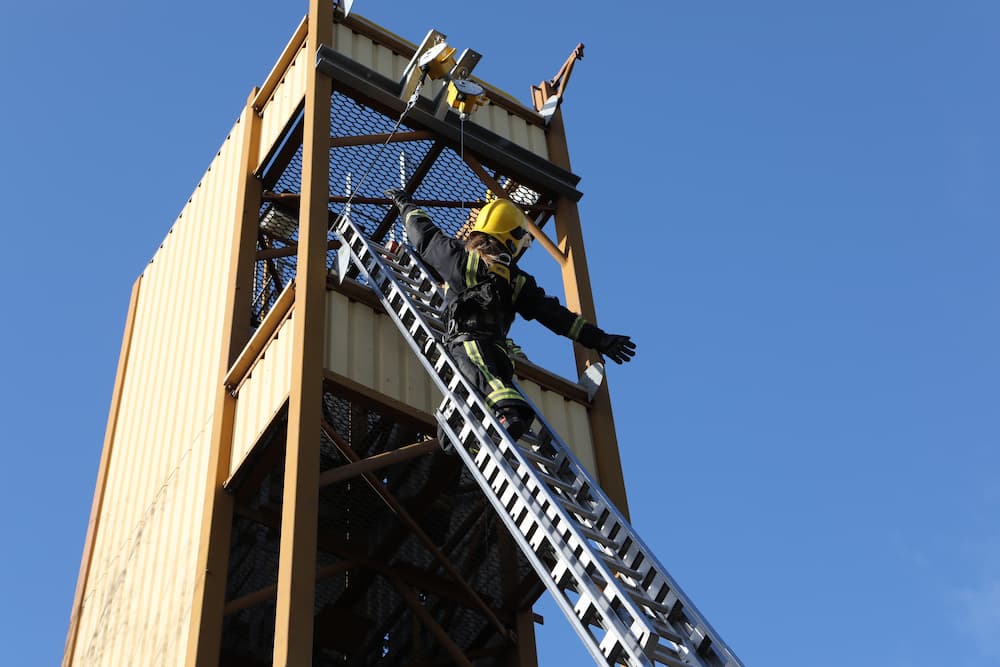
Test 6 - Practical Selection Tests
Equipment Carry Test on a 25-metre-long course. Involves four different pieces of equipment and shuttle runs.
Time limit: 5 minutes 47 seconds
Task details are outlined in the drop downs below.
Holding the hose reel at waist height run it out to the 25m line and place down (marked with a cone).

Run back to the start line (marked with a cone) and pick up the two coiled lengths of hose by the handles and carry them up and down the course for four lengths. Walk with a good brisk stride.
Important qualities for this test: Grip strength, lower arm strength, shoulder strength, cardiovascular fitness. The coiled hose is 16kg each.
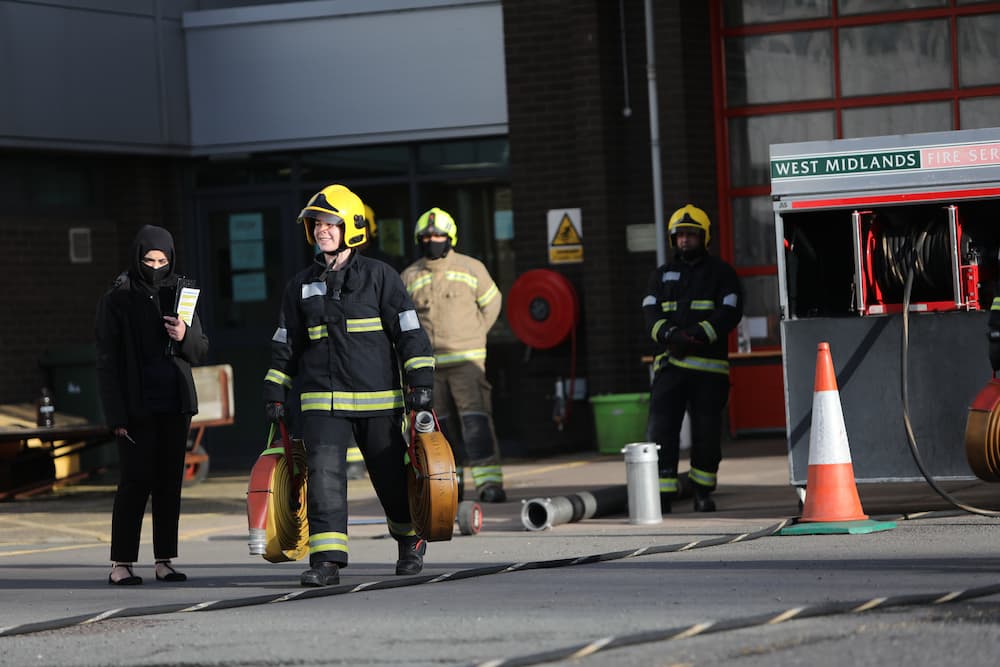
Pick up one coiled length of hose and carry it by the centre lugs at chest height for 25 metres and place down at the marker cone.
Important qualities for this test: Upper back strength, core muscle strength, grip strength, upper and lower arm strength, cardiovascular fitness. The coiled hose is 16kg.

Run three lengths back to the starting cone.
Important qualities for this test:
Endurance, cardiovascular fitness.
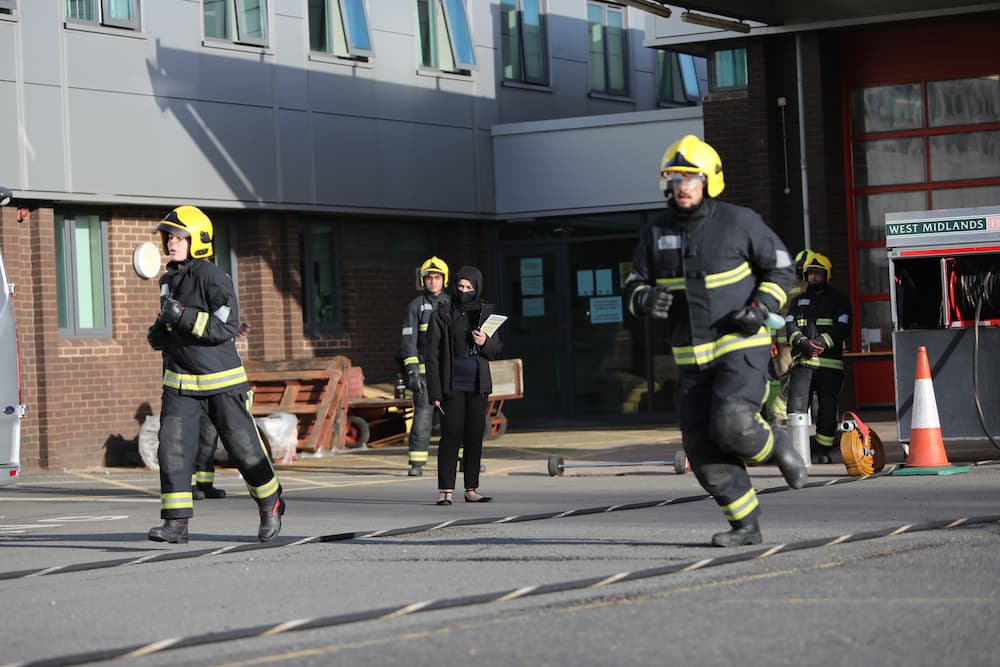
Important qualities for this test: Balance, shoulder strength, upper and lower arm strength, endurance, cardiovascular fitness. The silver hose is 20kg and the strainer basket is 5kg.

Run for four lengths of the 25-metre course.
Important qualities for this test: Endurance, cardiovascular fitness.
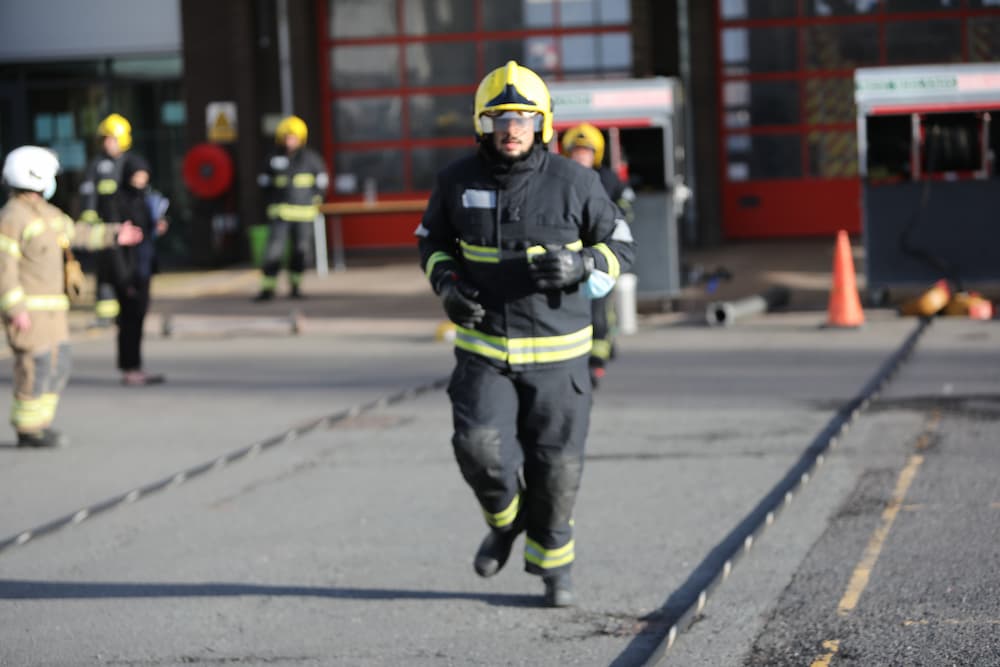
Pick up and carry the 30kg barbell for four lengths of the 25-metre course.
Important qualities for this test: Grip strength, lower arm strength, shoulder and upper body strength, endurance, cardiovascular fitness.
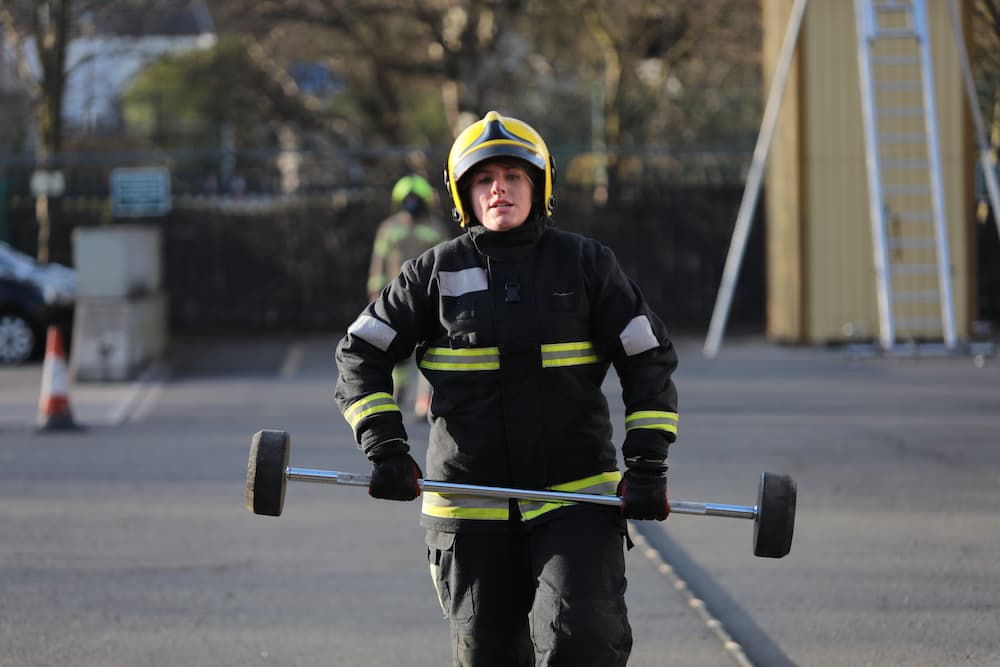
Stage 4 - Pre-employment checks
These checks include:
Medical, which currently includes;
Height, weight, blood pressure, urinalysis (urine test), eye test (near and distance vision, with/without spectacles), breathing test (lung function), hearing test (audiometry).
You will be asked questions about your health and seen by an Occupational Health Consultant (Doctor) who will review your results and may examine you.
A fitness assessment will be carried out by the fitness advisor as part of your medical.
Kit measurement
A date will be issued for you to be measured for your firefighting kit and uniform.
References
Requests for these will be sent to your referees following your successful completion of these stages.
Following successful completion of all stages and satisfactory references being returned, we will allocate you a course start date and a contract will be issued.
Security check
A full Disclosure and Barring Service (DBS) check will be completed, prior to offer of contract, for successful candidates.
It is your responsibility to inform us of any additional or outstanding criminal convictions during the recruitment process.
